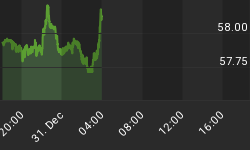A decade ago, with the majority of stores exiting, Euclid Square Mall in Ohio was temporarily used by religious congregations who held services in abandoned retail stores. Two years ago, Amazon announced plans to build a fulfillment center in its place.
The fate of many malls around the country has largely come to mirror that of the Ohio story in varying degrees of non-retail activity, including simply a place where the elderly gather to walk a few safe laps.
Shopping malls may be hot this holiday season, but more so in classic Christmas movies or the season finale of “The Walking Dead”. Not in reality.
In the retail apocalypse, American malls are having a hard time keeping their doors open, and they’re trying pretty much every gimmick in the book.
Several big cities are testing out malls that cater to the upper-middle-class, millionaires and wealthy tourists.
Opened in March this year, Hudson Yards in New York City features high-end brands such as Tiffany & Co, Cartier, Dior, and the like. According to management, 12 million people have visited the mall since its doors opened.
High-end malls in other parts of the country are thriving as well. One of them, the Bal Harbour Shops, located in Miami Beach, just announced a $550-million expansion. Bal Harbour Shops, with its mandatory $30 vehicle valet, is considered one of the most luxurious shopping malls in the country, complete with five-star restaurants. As an additional benefit, luxury malls have been relatively immune to the US and China trade war.
But the tariff tit-for-tat has had a significant impact on retailers catering to non-millionaires.
Ten years into America’s longest economic expansion, the retail apocalypse shows no signs of letting up, leaving a trail of thousands of abandoned malls dotting the country like ghost towns from a forgotten era.
Rate of store closures that rocked the retail industry over the past couple of years is expected to continue, with more closures expected this year. Retailers announced more than 8,600 store closings in 2019.
A report by Credit Suisse a couple of years ago estimated that 20% to 25% of malls would close down between 2017 and 2022.
More than 12,000 stores have so far fallen by the wayside, yet the bloodbath continues.
In 2017, retailers shuttered a record-breaking 102 million square feet of store space. In 2018, another 155 million square feet of space was withdrawn. And this year is set to see another 4,300 stores added to the retail graveyard--topping 2018’s 3,800 stores.
Spending on apparel has shifted to online shopping, accounting for about 25% of total apparel sales in the U.S., according to a recent survey by investment bank USB. It expects that to grow to 31% by 2023.
When it comes to non-millionaire malls, the majority of shoppers who still walk through those doors aren’t shoppers at all. They’re hitting up the food court.
Related: The Free Money Bubble Is About To Burst
As usual, online retailers are first to blame for the retail collapse in the US. Amazon as the frontrunner, also labeled as the ‘suicide bomber of retail.’
Still, e-commerce sales accounted for just 14.3% of retail sales in 2018. Amazon is, of course, overrepresented in that category after gobbling up 40 percent of all online dollars.
Still, it means that roughly 85% of all U.S. retail sales are still done in brick-and-mortar stores. Therefore, online retailers are not the only ones to blame for the physical stores’ troubles.
It’s not just a shift away from brick-and-mortar retail to online retail--it’s a shift from boring retail to … not boring retail.
Malls for the wealthy aren’t the only things surviving. And while there’s a lot of dollar-store attendance lately, the non-millionaire malls are being outdone by trendy and upscale specialty stores, along with brands that started out in the digital space and are now moving into the physical space, as Forbes points out.
Deloitte calls it “The Great Retail Bifurcation”, and it’s happening because the rich are getting richer and lower income Americans are experiencing wage stagnation that sends them to places like the Dollar Store.
By Anes Alic for SafeHaven.com
More Top Reads From Safehaven.com:

















